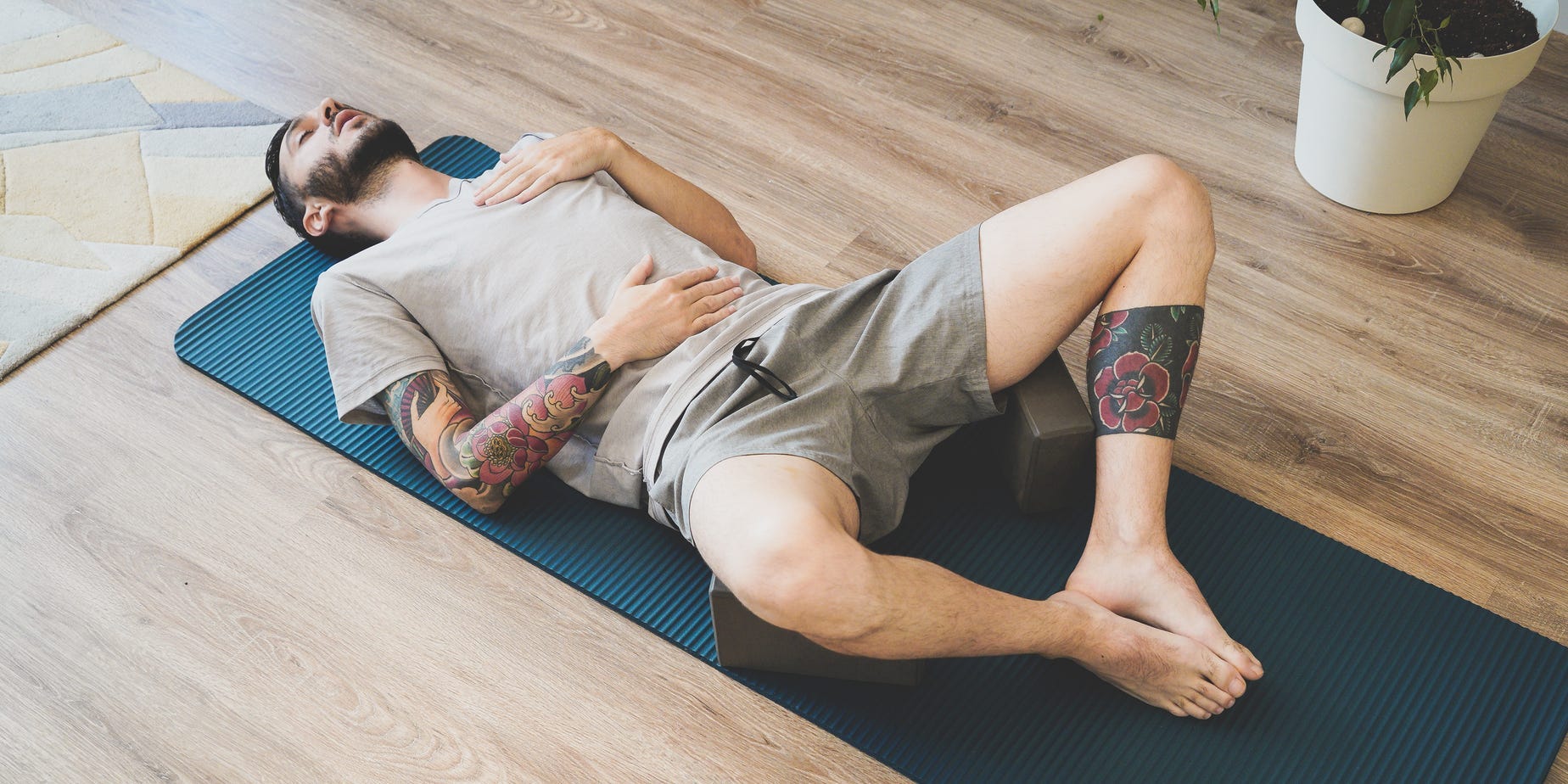
Mihail Mihaylov/Getty Images
- Diaphragmatic breathing is a technique that makes full use of your lung capacity.
- Diaphragmatic breathing benefits include reduced stress, improved sleep, and lowered heart rate.
- You should practice diaphragmatic breathing exercises once or twice a day to get started.
- Visit Insider's Health Reference library for more advice.
Diaphragmatic breathing, aka belly breathing, is a breathing technique that helps you take longer, slower, deeper breaths with the use of your diaphragm.
Your body is designed to breathe deeply using the diaphragm, but people get out of the habit and end up breathing more with the chest instead. But when you breathe with your chest, the breath is shallower, which can increase tension and anxiety.
During diaphragmatic breathing, the belly or abdomen should expand and contract, while the chest and shoulders should stay fairly steady, says Megan Riehl, a doctor of psychology and clinical assistant professor at the University of Michigan Health.
Here are the potential benefits of diaphragmatic breathing and how to practice it.
Diaphragmatic breathing benefits
Diaphragmatic breathing is more efficient than breathing with your chest muscles, so not only do you use less energy to breathe, you also gain more oxygen with deeper breaths.
Some benefits include:
1. Reducing stress and anxiety
Diaphragmatic breathing activates your vagus nerve, which triggers your parasympathetic nervous system, or your body's relaxation response. Therefore, the technique can calm you when you're stressed or anxious.
In fact, a 2019 review found that in people over 18 years old, diaphragmatic breathing lowered stress hormone levels, blood pressure, and self-reported stress levels.
2. Improving sleep
Diaphragmatic breathing can also help you fall asleep. In fact, a 2021 study of front-line nurses in China found diaphragmatic breathing improved sleep quality and reduced anxiety. The researchers used a sleep quality index, anxiety scale, and depression scale before and after to assess the effects of the technique.
3. Managing pain and discomfort
Diaphragmatic breathing also lowers your level of the stress hormone cortisol, which has an influence on physical pain. Because it lowers cortisol, it helps manage pain and discomfort from various medical conditions, including chronic obstructive pulmonary disease (COPD), shortness of breath, and various digestive conditions.
Other benefits include:
- Slowing the heartbeat
- Lowering or stabilizing blood pressure
- Strengthening the immune system
- Boosting energy
How to practice diaphragmatic breathing
When you're first starting with diaphragmatic breathing, Michele Hoffman, a certified yoga therapist at Mayo Clinic Health System, recommends practicing while lying down. Although you can do it sitting up, poor posture while sitting can make diaphragmatic breathing more difficult to do correctly, she says.
If you feel lightheaded while practicing, you can speed up your breaths. "The goal is just to have your inhale be a little shorter than your exhale," Riehl says.
This practice can feel uncomfortable in the beginning, because it's different from the way you normally breathe, Riehl says. But after a week or so of consistent practice, it's likely to feel more natural.
People who have difficulty breathing through their nose may find diaphragmatic breathing challenging, but in that case, you should consult with your physician to see what is causing the problem and get proper treatment.
Insider's takeaway
Diaphragmatic breathing is how we're naturally supposed to breathe, but many people take shallow breaths using their chest muscles. Therefore, practice diaphragmatic breathing until it becomes second nature. Once you get used to diaphragmatic breathing, you can do it in any setting, whenever you need it.
"When you are really feeling some stress or anxiety, you can take two minutes and just close your eyes and practice diaphragmatic breathing. That can calm the body and calm the nerves," Riehl says.
